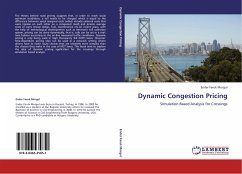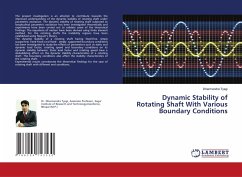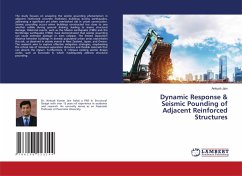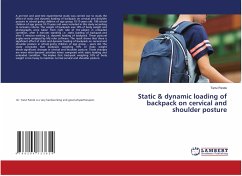
Dynamic Congestion Pricing
Simulation Based Analysis for Crossings
Versandkostenfrei!
Versandfertig in 6-10 Tagen
39,99 €
inkl. MwSt.

PAYBACK Punkte
20 °P sammeln!
The theory behind road pricing suggests that, in order to reach social optimum conditions, a toll needs to be charged which is equal to the difference between social marginal costs (which include external costs that users impose on each other on a congested road) and private average costs of users (travel delays, fuel, maintenance etc.)In recent years, with the help of technological developments such as electronic toll collection system, pricing can be done dynamically, that is, tolls can be set in a real-time fashion according to the on-line measured traffic conditions. Dynamic pricing is onl...
The theory behind road pricing suggests that, in order to reach social optimum conditions, a toll needs to be charged which is equal to the difference between social marginal costs (which include external costs that users impose on each other on a congested road) and private average costs of users (travel delays, fuel, maintenance etc.)In recent years, with the help of technological developments such as electronic toll collection system, pricing can be done dynamically, that is, tolls can be set in a real-time fashion according to the on-line measured traffic conditions. Dynamic pricing is only being used in High Occupancy Toll (HOT) lanes. However time-dependent pricing idea can be used in a network setting where drivers have to make route choices that are relatively more complex than the choices they make in the case of HOT lanes. This book aims to explore the idea of dynamic pricing application for the crossings through simulation based analysis.












